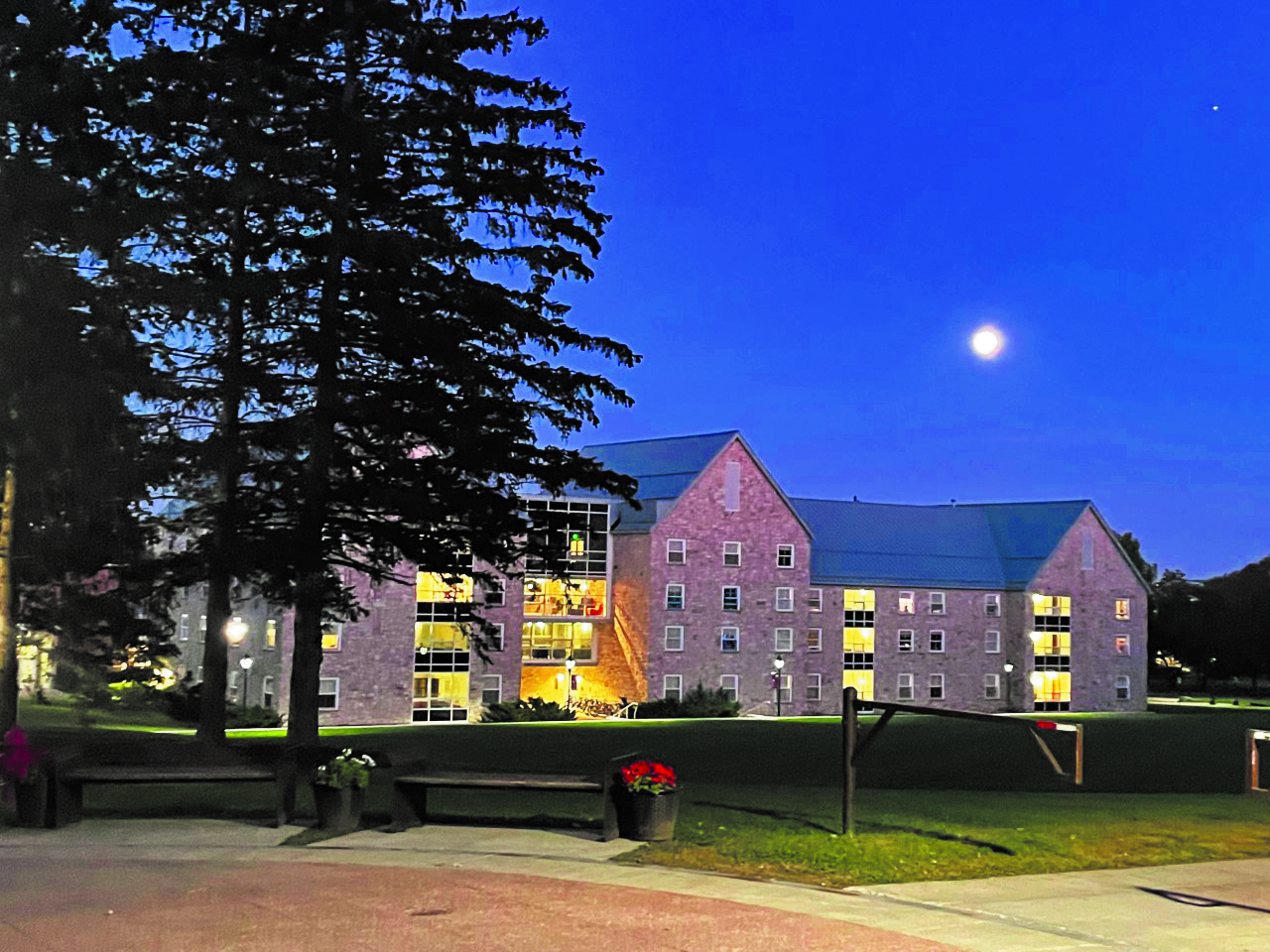Thanks to the help of SLU Professor Aileen A. O-Donoghue and Dominic Ford’s incredibly informative astronomical calendar, I am able to bring to you this week’s sky events:
But first, I would like to discuss this month’s full moon just a little more. Last week, I mentioned that this moon was called the Harvest Moon, but I neglected to explain why. According to Professor O-Donoghue, the Harvest Moon hangs high and bright in the sky, for a number of days actually. So I assume that this aspect and its convenient placement in the year makes it a great help for farmers who are busy harvesting this time of year.
Also, if you happened to catch this full moon, you may have noticed a sort of warm orange color to it. O’Donoghue said this color comes from the blue light in light beams that get scattered in the atmosphere, which makes our sky blue and leaves only warm colors to shine through. It is why our sun appears yellow instead of white, and also why our bright full moons are sometimes a little orange.This past Wednesday marked the official beginning of fall at the Autumnal (September) equinox. Sunset is getting earlier each day, about four minutes earlier actually. As fall rolls in, we will really start to notice the days getting shorter, but that just means more chances for stargazing.
On that note, the Moon and Uranus will conjunct in Aries this Friday, September 24. For those of you interested in astrology this may be worth looking into. Almost everybody knows what constellation rules over their personality, but did you know that planets have a role to play in our charts as well? If not, I definitely recommend finding out your planet and to watch the positions of the planets, you might find some more in-depth readings this way. When two planets conjunction their energies are said to merge, and some pairings go together better than others.
For example, Mercury, in association to communication and expression, and Saturn, in association with boundaries and discipline, can seem to work in opposition depending on your chart. Meanwhile, the moon and Uranus seem like a slightly more compatible pairing. Uranus usually brings revelations, change, and progressiveness. Meanwhile, the Moon is associated with emotion, empathy, and sensitivity and often refers to the inner self. Therefore, some compassion and sensitivity during a time of important change seems like an ideal pairing.
According to Ford, Monday, September 27, will be the peak of the Daytime Sextantid meteor shower. So be sure to get outside that night, since you will have a decent chance of catching a shooting star! I know I have already caught a couple in the corner of my eye this past week and it never seizes to amaze me. Ford’s website says that your chance of catching a good one will increase as the night shifts closer to dawn, so if you’re really looking to catch some good ones it might be better to get up early rather than stay up late.
Fun fact from Ford, shooting stars occur as the earth passes through “dense” groupings of “particular large amounts of solid material.” So, when we see a shooting star it is basically one of these big space rocks hitting our atmosphere and burning up really fast. That’s why they streak and are so short lived. If you don’t happen to see any shooting-stars this week, don’t feel too bad, it is looking like we will have lots of opportunities next month for more shooting stars.
Finally, it is worth mentioning that 47-TUC, what Ford described as “the second brightest globular structure in the sky” will be visible for most of the world, unfortunately Canton, New York is not included in that. However, next month it seems there may be some exciting sites near Andromeda(both the constellation and the galaxy) to look forward to, so stay tuned!



